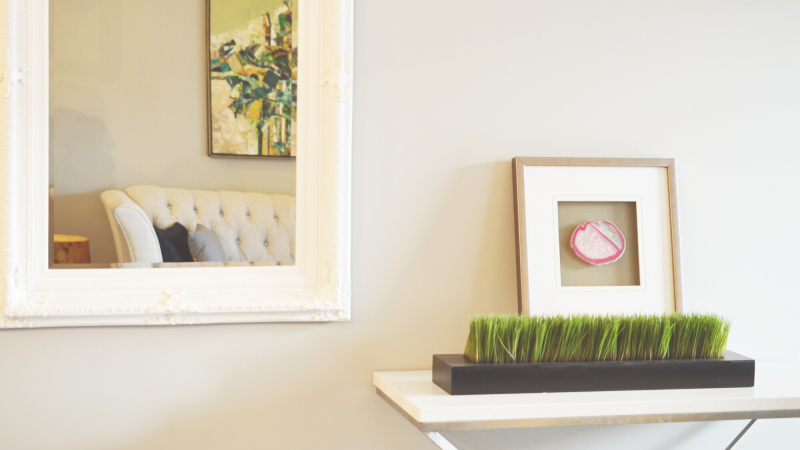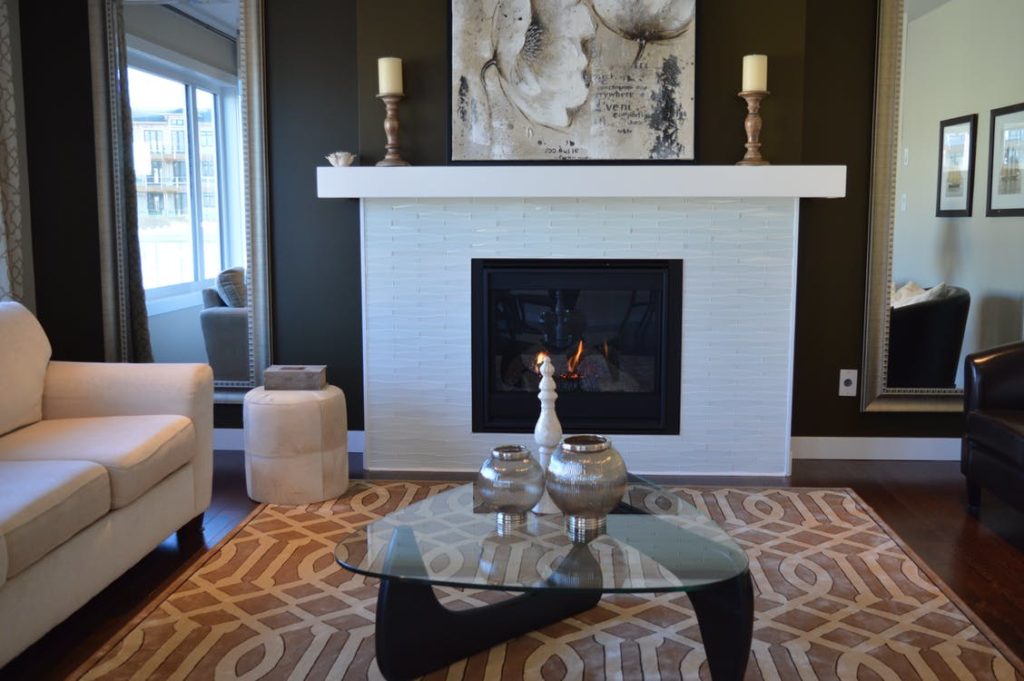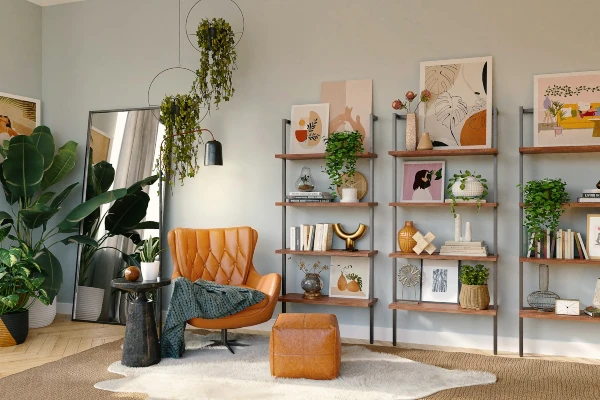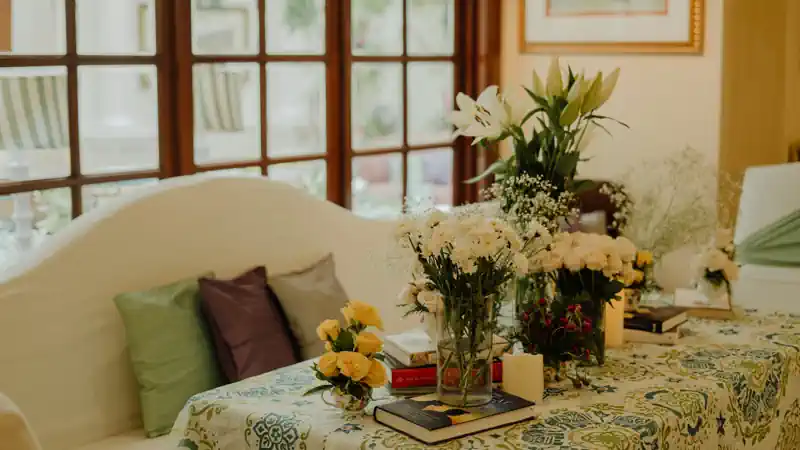Disclosure: This post may contain affiliate links, meaning we get a commission if you decide to make a purchase through our links, at no cost to you. Please read our disclosure for more info.
America is in the grips of a small-living frenzy.
One real estate study found that most Americans surveyed wanted to downsize rather than upsize their current home. And it’s not just later debt-saddled Millennials influencing this change. Baby Boomers, their kids all grown up, are thinking smaller, too. Even downsizing to a condo has great advantages, no more yard work!
If your plan for a grand design is a 1,200 square foot footprint, or even something more extreme like a tiny home on wheels, you might be thinking about how to make your home look bigger.
Fret not! Below, we’ve laid out seven simple steps to making the most out of your living space.
In This Post:
1. Everything in Its Place
Think about it. What’s the first thing you do when you come home from work?
You get in the door, dump your keys and other belongings on the entranceway credenza, or maybe the couch. Then you head into the kitchen to make dinner, get changed out of your work clothes, or help your children with their homework.
What you have left behind, however, is a clutter-causing mess that makes your house look a whole lot smaller.
Your quest for a more spacious home should include finding a permanent spot for everything you own.
This means you stash your keys, coat, and handbag in a cupboard by the front door. Your shoes are neatly organized on a shoe rack. Your tables and benchtops are clear of dishes, cereal boxes, and kid’s coloring pencils because they’re all safely stowed away on shelves or inside containers.
2. Play Mind Games With Yourself
Sometimes all a room needs is a cleverly placed lick of paint, or a rearrange to deceive your eyes and mind into thinking it’s larger than it really is.
Tricks like:
- Leave shelf space clear
- Paint the walls, woodwork, and ceilings the same color
- Place a large rug under furniture
- Move furniture out of walkways
- Choose solid-colored upholstery
In the Victorian era, it was in-vogue to cram as much as possible into a single room. While that antiquated look has a certain charm in, say, a Victorian recreation home in England, it’s not what you need in contemporary America.
When you’re aiming at creating more space in your home, always opt for less stuff. Create negative space by leaving walls, bookshelves, countertops, and hallways bare.
3. Let There Be Light
By maximizing your light sources, you transform a cramped space into something spacious.
When thinking about how to adorn your windows, the lighter the coverage, the better. Go for types of blinds that provide privacy without compromising natural light or curtains in breezy fabrics. Avoid heavy or dark drapes and black-out curtains.
When it comes to giving the impression of space in home decorating, neutral tones always win over bold colors. Paint your walls in pastels or decorate with a lightly colored, gently patterned wallpaper. Choose furniture upholstered in block colors and rugs crafted from natural materials.
Whenever possible, open your windows right up to let the sunlight stream in. It’s not only useful for creating space; bright sunlight helps to improve your mood, too.
4. Keep Grand Design to a Minimum
Over the past decade, the minimalism movement has wowed us with its promise of a more straightforward way of living.
When building a minimalist aesthetic for your home, look for furniture pieces with space underneath them–a TV cabinet on raised legs, for example. Also, look for places in your home where you can add built-ins. Instead of having stand-alone dressers, bookshelves, and wardrobes, build them into the walls.
Minimalism doesn’t mean boring, nor does it mean cold and unfeeling. A minimalist interior can still be warm and inviting. Counteract all that bare space with well-chosen furniture pieces, soft furnishings, and only the accessories that really mean something to you and your family.
And remember, more is always less. Do you need eight chairs for your dining table, or could you make do with six? How often do you use that single-seater in the corner of the office?
5. Declutter Often
Decluttering might be a 2020s buzzword, but there are some practical and even psychological benefits to dedicating time to a seasonal spring clean.
Maybe you’re a collector of cute porcelain animals? Or perhaps you’re still holding onto your collection of CDs from the days before Spotify. Whatever the reason for your clutter, it’s something you need to take care of if you want more space.
Getting your storage sorted is perhaps the most critical step in the decluttering timetable. Too little, and items will be out on display, creating an unwanted mess. Too much, and you’ll be tempted to keep everything–since you can’t just hide it away.
6. Mirror, Mirror, on the Wall
Have you ever been inside the mirror maze at the fair? Think about how all those mirrors made the crowded corridors feel endlessly large. We’re not suggesting you turn your home into a carnival tent, but we are telling you to embrace reflective surfaces.
This is one interior design trick that everyone can afford. For renters or those that move house often, you can bring a mirror or piece of mirrored furniture with you–making the investment worth it.
In small rooms like a private dining room, home office, or even a walk-in wardrobe, lean an oversized framed mirror against the wall. It will reflect light to the viewer, making the room feel larger. Try the same idea on a coffee table or the front of the chest of drawers for the same effect.
Large-Up Your Small Life
Whether you’re squeezed into a tiny house, living small in a condo, or testing out family life quaint two-bedroom cottage, you can quickly start to feel cramped. If it seems like you’re living a smaller life than you need, try using some of these tricks in your home. We guarantee you’ll be on your way to a grand design in no time.
Do you need more tips on interior decoration? Take a look through the other articles on our blog for inspiration.




